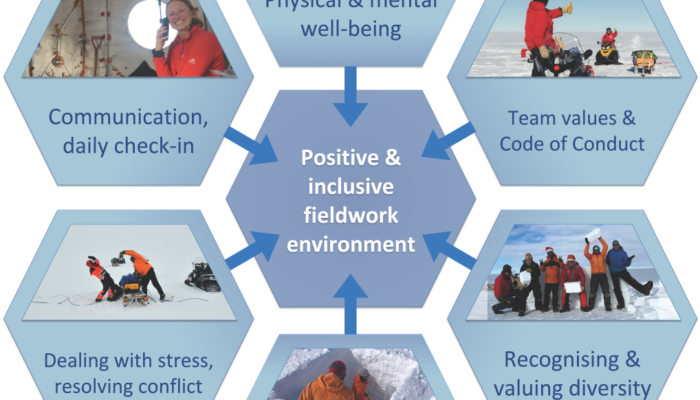Fieldwork is essential to polar sciences, but who are the people that actually do the fieldwork these days? A great field team includes people spanning a diversity of scientific skills, but at the same time, a diversity of cultures, backgrounds, and identities also adds intrinsic value to team dynamics and the overall field work experience. As part of the International Thwaites Glacier Collaborati ...[Read More]
If you didn't find what you was looking for try searching again.
Cryospheric Sciences
Highlighted Paper – Human Errors in Snow Models
As scientists, we often encounter errors in our own work and in the work of others. As modelers, we call these errors “bugs”. Of course, they are not actual insects, but they definitely keep us awake from time to time. Even though everyone is aware of their existence, we rarely discuss them in a scientific context. In today’s post, I bring to you the work and journey of a snow scientist, Dr. Cécil ...[Read More]
Cryospheric Sciences
Did you know about Antarctic snow megadunes?
When we think of dunes our thoughts automatically go to deserts and sand. But on Earth, as well as on other celestial bodies of the solar system, dunes exist also in a completely different environment. I am talking about gigantic dunes consisting of snow. On Earth they are called megadunes and you can find them only in East Antarctica, where they extend for thousands of km. If you want to know mor ...[Read More]
Cryospheric Sciences
Quantifying the experience: Himalayan fieldwork in numbers
The Himalayas are Big. But how Big is the fieldwork experience? What is behind all the mountain field data and beautiful mountain pictures? 40 preparation emails, 110 km of hiking, 170 kg of gear and 25 people in the team. We try to put some numbers on the experience we had during the Langtang, Nepal Himalaya expedition in November 2022. Behind the scenes Remote mountain fieldwork can be quite an ...[Read More]
Cryospheric Sciences
What not to miss at this year’s EGU General Assembly
We are already half way through April and that means that this year’s EGU General Assembly (GA) is just around the corner. Whether this will be your first, second or seventh EGU GA, you are probably still overwhelmed by the jungle of opportunities there are – courses, medal lectures, talks, discussions, poster sessions – no? We certainly still are and that’s why we always collect our f ...[Read More]
Cryospheric Sciences
3 Reasons to engage in early career networks
There are several early career groups, which are affiliated with cryosphere-based research in one way or another. APECS (Association of Polar Early Career Scientists) is an international network that is present during many occasions and events in the world of polar research. Have you ever wondered why busy early career researchers (ECRs) use their time also for volunteering in such groups? Today, ...[Read More]
Cryospheric Sciences
Enigmatic Climatic Event: Antarctic Cold Reversal
In this week’s blog, Levan Tielidze tells us about the insight into the response of mountain glaciers to the Antarctic Cold Reversal (ACR) event in New Zealand to better understand the climatic history of the Southern Hemisphere during the last deglaciation. The ACR was a cold period occurred in the Southern Hemisphere during the transition from the last glacial period to the current interglacial ...[Read More]
Cryospheric Sciences
Perspective on Listening to Permafrost
> Reflections from an ongoing art-science research project Common Grounds < How to visualize thousands of thousands (> 20,000,000) of data points collected in the Arctic atmosphere and subsurface at a permafrost observatory over 25 years? How to tell the story of permafrost, ground that is permanently frozen and an important part of the cryosphere, that is currently warming and thawing at ...[Read More]
Cryospheric Sciences
Image of the week – Birds in the Arctic
I am a hobby ornithologist and love watching birds. It is fun and relaxing to search the trees or fields for feathered friends. One has to be aware of their surroundings, which can make birding even meditative. Here, I will tell you more about Arctic breeding birds, their population declines and I present to you three birds of the many I saw on my very first trips to the Arctic. Arctic breeding bi ...[Read More]
Cryospheric Sciences
Wake up every one – permafrost microbes feasting – greenhouse gases go
I really like to combine science and art. This puts science in a larger perspective and can help understand it in different ways. And perhaps more importantly, it evokes emotion. I wrote haikus and created stencils for every chapter of my PhD thesis. I created these artworks to illustrate the dimensions of the permafrost region and the consequences of global warming on permafrost. Let me show you ...[Read More]










